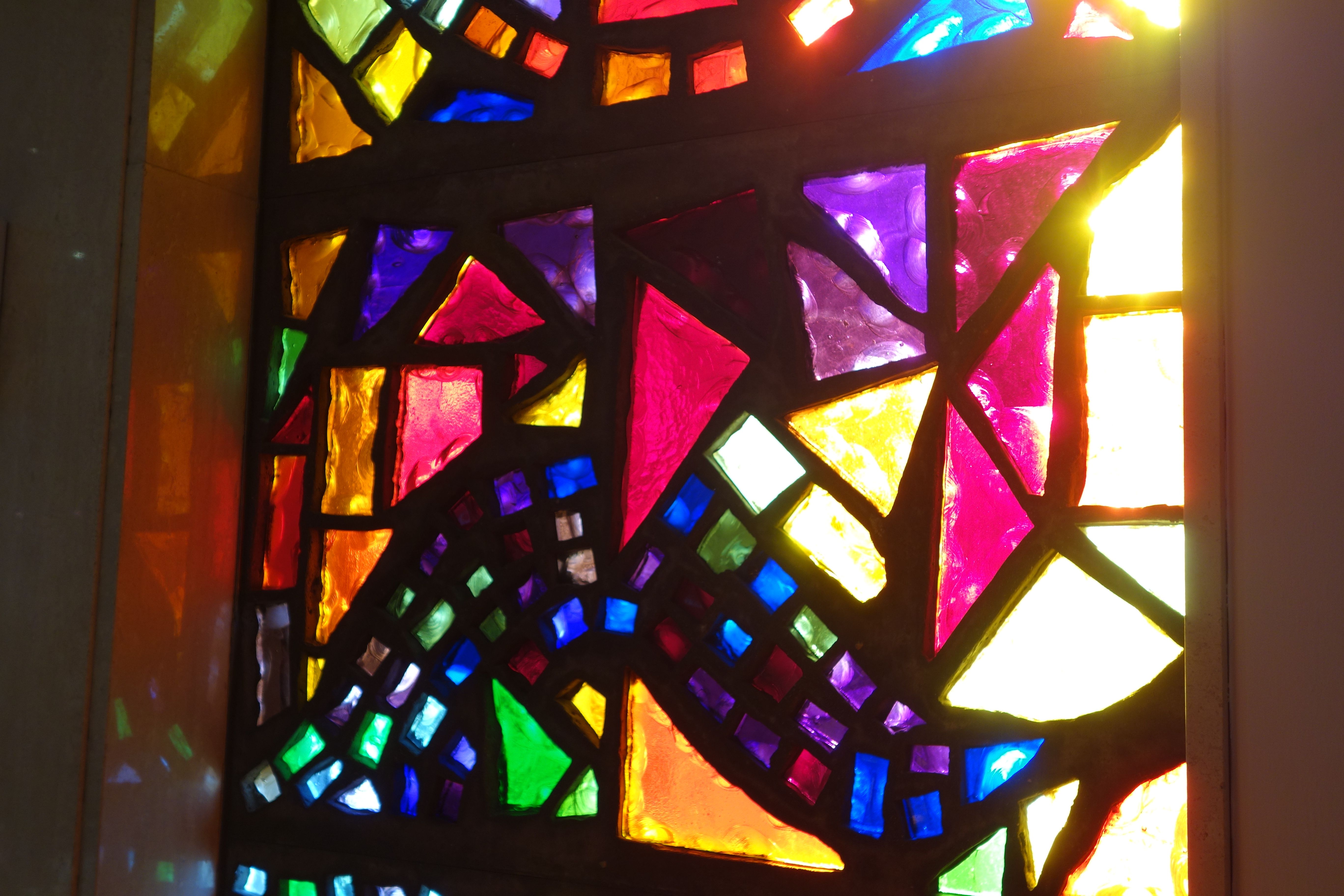Marianne from East of Málaga asks
what can I spy
and what is my point of view?
I spy with my little eye
a window I can’t see through:


The glass is about 20cm thick, hand-chiselled and set into pewter-coloured concrete. The artist is an amazing Australian, Leonard French, who made 16 of these windows for the National Library in 1967. They are all visible from the foyer of the library through the interior plain glass walls of the café and the bookshop. The windows on the side of the building receiving the morning sun are in warm colours, those you see here decorating the walls of the café. On the other side of the foyer, the afternoon sun side, the colours are cool blues and purples filling two walls of the bookshop. French had a philosophy that art should be accessible to the masses and not just for viewing, a philosophy which makes me happy every time I sit at a window table in the café (I’m a little less happy when they’re all taken.). The chiselled edges of the glass are not sharp. I know this because I like to stroke it. The sun shining on the glass makes it glow and makes it warm to touch, but not hot. A spirit-lifter.
As part of the photo challenge, Marianne suggests we recommend two blogs. Two come to mind immediately: The Wanderlust Gene and Covetotop. Their blogs don’t just have interesting photos of faraway places, but more importantly for me they are well-written. I’m always on the lookout for readable writers.














